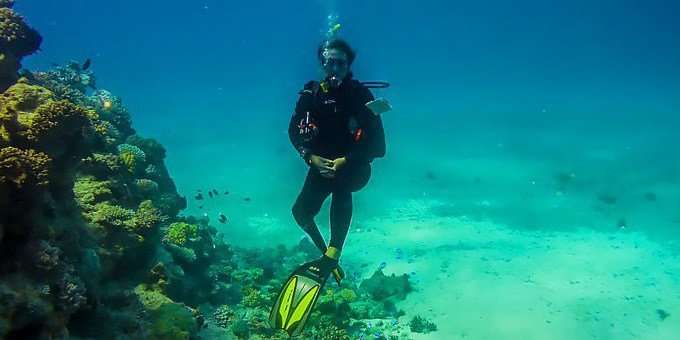Embarking on outdoor adventures with your baby is a wonderful way to create lasting memories and foster a love for nature early on․ Selecting the right gear is paramount, and this begins with ensuring your little one’s feet are well-protected and comfortable․ Choosing the right footwear is essential, and that means finding the best baby hiking shoes․ This guide will help you navigate the options and find the perfect pair of baby hiking shoes for your budding explorer, keeping their tiny toes safe and happy on every trail․
Factors to Consider When Selecting Baby Hiking Shoes
Finding the right hiking shoes for your baby involves a careful consideration of several key factors․ Prioritizing these aspects will ensure comfort, safety, and the longevity of the shoes themselves․
- Size and Fit: Accurate sizing is crucial․ Measure your baby’s feet regularly and choose shoes with enough room for growth but not so much that they slip․
- Material: Opt for breathable and durable materials like leather or synthetic fabrics․ These materials allow for ventilation and can withstand the wear and tear of outdoor activities․
- Sole: Look for a sole with good traction to prevent slips and falls․ Rubber soles are generally a good choice․
- Support: Ankle support is important, especially on uneven terrain․ Look for shoes that provide good stability without restricting movement․
- Weight: Choose lightweight shoes to minimize fatigue and allow for natural movement․
Types of Baby Hiking Shoes
Different terrains and hiking styles call for different types of shoes․ Understanding the available options will help you make an informed decision․
Lightweight Hiking Shoes
These shoes are ideal for short, easy hikes on well-maintained trails․ They are typically made from breathable materials and offer good flexibility․
Mid-Cut Hiking Shoes
Mid-cut shoes provide more ankle support than lightweight shoes, making them suitable for moderate hikes on slightly more challenging terrain․
High-Cut Hiking Boots
High-cut boots offer maximum ankle support and are best for rugged terrain or longer hikes․ However, they may be too stiff for very young babies․ It’s best to consult with a pediatrician before choosing this option․
Caring for Your Baby’s Hiking Shoes
Proper care will extend the life of your baby’s hiking shoes and keep them in good condition․
- Clean the shoes regularly with a damp cloth and mild soap․
- Allow the shoes to air dry completely after each use․
- Store the shoes in a cool, dry place․
- Inspect the shoes regularly for signs of wear and tear․
Comparative Table: Baby Hiking Shoe Features
| Feature | Lightweight Hiking Shoes | Mid-Cut Hiking Shoes | High-Cut Hiking Boots |
|---|---|---|---|
| Ankle Support | Low | Moderate | High |
| Weight | Light | Moderate | Heavy |
| Terrain | Easy | Moderate | Rugged |
Choosing the best baby hiking shoes is a key part of making hiking with your little one a safe and enjoyable experience․ By considering the factors outlined above, and selecting the right type of shoe for your specific needs, you can ensure that your baby’s feet are well-protected and comfortable on every adventure․
I remember the first time I took my daughter, Lily, on a real hike․ She was barely walking steadily, more of a wobbly toddle, and I was so excited to share my love of the outdoors with her․ I meticulously researched baby hiking shoes, poring over reviews and agonizing over features․ I ended up choosing a pair of lightweight, flexible shoes with a good rubber sole․ They seemed perfect at the time, but after a few rocky trails, I quickly realized they weren’t quite up to the task․
My Experiences: Learning from Mistakes
My initial selection of lightweight shoes proved adequate for gentle park strolls, but they lacked the necessary ankle support for uneven terrain․ Lily’s little ankles wobbled precariously on loose gravel, and I constantly worried about her twisting something․ I quickly learned that a little extra support goes a long way when navigating anything beyond a paved path․
The Mid-Cut Savior
After that first, slightly nerve-wracking experience, I invested in a pair of mid-cut hiking shoes․ The difference was remarkable! The added ankle support gave Lily much more stability, and I felt significantly more confident letting her explore․ I also noticed that the thicker sole protected her feet better from sharp rocks and roots․ Lesson learned: don’t underestimate the importance of proper ankle support and sole protection!
Material Matters: Breathability is Key
Another crucial lesson I learned the hard way was the importance of breathability․ On a particularly warm day, I noticed Lily’s little feet were damp and uncomfortable after our hike․ The shoes I had chosen, while durable, weren’t very breathable․ This led to some serious crankiness on the way home! I switched to a pair made with a more breathable mesh material, and the difference was night and day․ No more sweaty, unhappy feet!
Finding the Right Fit: A Constant Battle
Perhaps the biggest challenge I faced was consistently finding the right fit․ Babies’ feet grow at an alarming rate! I found myself measuring Lily’s feet every few weeks to ensure her shoes weren’t too tight․ I also learned to be wary of online sizing charts – they aren’t always accurate․ It’s always best to try the shoes on in person, if possible, or order multiple sizes and return the ones that don’t fit․
Ultimately, finding the perfect baby hiking shoes is a process of trial and error․ Every child is different, and what works for one may not work for another․ My experiences taught me the importance of ankle support, sole protection, breathability, and, above all, a proper fit․ Now, armed with this knowledge, I feel much more confident in choosing footwear that will keep Lily’s little feet safe and happy as we continue to explore the great outdoors together․

